∞ Originally published in the Vancouver Province and Edmonton Journal, January 18, 2009. ∞
When the curtain goes up on Shakespeare’s masterwork King Lear, it opens to a wary audience. The patrons of London’s Globe aren’t concerned about the dark subject matter of one of the Bard’s great tragedies. Rather, the crowd standing under the open roof eye rain clouds gathering overhead with suspicion. Suddenly, just as Lear disowns Cordelia, thunder claps and the gloomy skies pelt players with rain. The actors sweep sopping capes over the boards. The crowds hunker down, cold, wet and likely as miserable as the anguished king flailing on the moors. A deluge was not in the original stage directions. But you get the feeling Shakespeare would have approved.
A visit to London’s Globe Theatre — built on the site of the original, where works like Macbeth and Romeo and Juliet debuted — is one of many ways to channel Shakespeare’s London and relive a piece of Elizabethan England. Though the Great Fire of 1666 and Second World War destroyed much of the city’s history, there are still ways to relive the Bard’s life and times.
The city is a treasure trove for theatre-lovers, historians and “bardolators,” but also for casual travellers looking for a unique way to see the British capital.
Born in 1564 in Stratford-upon- Avon in Warwickshire, William Shakespeare was the third of eight children of Mary, an aristocratic Catholic, and John, an illiterate glove-maker. At 18, he married his pregnant lover, Anne Hathaway, 26. They had three children, but their only son, Hamnet, died at age 11.
Shakespeare arrived in London in 1587 at age 23 and began acting and writing for the Kings Men, which became a leading company. His first plays were published in 1592. He went on to write 38 plays, 154 sonnets, and two long poems. Early on, his plays were performed at the Theatre and Curtain playhouses in Shoreditch. His company built the original Globe in 1599. There, they staged summer performances (until the Globe burned down in 1613 after a cannon lit the thatch roof during a performance of Henry VIII). In 1608 they took over the Blackfriars theatre for winter shows.
Shakespeare’s plays were popular, but he never achieved the acclaim heaped upon him in later years. He died on April 23, 1616, age 52. His remains are preserved near the altar of Holy Trinity Church in Stratford, where a bust and a plaque commemorate England’s national poet.
SHAKESPEARE’S SHOREDITCH
London today is a world-class capital of 7.5 million. But during Shakespeare’s time, it was a town of less than 200,000. The city, clustered along the Thames, was just outgrowing its fortifications and was rough around the edges.
Areas beyond city walls, like Shoreditch (immortalized as Cheapside in Henry IV) were thick with thieves and raucous theatregoers. But it’s perfectly safe now. Start at Shakespeare’s first home in Bishopsgate, the gateway to Shoreditch, a seedy area where visitors were advised to wear a sword for protection. Outside the gate was the Bedlam asylum and crime-rid- den inns. Today, Bedlam’s become the Liverpool Tube Station.
In Shoreditch, Shakespeare likely lived in Norton Foregate. Many plays were staged here. Stroll Theatre Curtain Road and look for No. 86, where a plaque marks the site of the Theatre, where Love’s Labours Lost and Much Ado About Nothing were first mounted. Nearby at Hewett Street another plaque marks the spot of the Curtain Theatre, where Henry V was staged and where the Bard performed. In 2008, the Museum of London unearthed the footings of the Theatre and a new theatre is set to be built on the site.
SHAKESPEARE IN SOUTHWARK
Shakespeare moved across the river to Southwark in 1599 to be closer to the Globe. It was a boomtown in Shakespeare’s day, with tenements and theatres — the Globe, Swan and Rose — and 300 inns, ale-houses and brothels where gam- bling, bowling and bear-baiting were popular. The main attraction now is the Globe Theatre, the work of Sam Wanamaker, who started the Shakespeare Globe Trust in the 1970s to better commemorate the historic site. The theatre opened in 1997, just across the Millennium Bridge from St. Paul’s Cathedral.
The new Globe — about 200 yards from the old — boasts the only thatched roof in London (most were banned after the Great Fire). In addition to staging plays from May to August, it houses exhibits and draws 750,000 visitors a year. The Globe gift shop stocks Bard baubles: T-Shirts that say, “Out, out damned spot!” and bottles of Globe Mead.
Find respite in pews where Shakespeare would have prayed at nearby St. Saviour’s Cathedral. Shakespeare’s brother, Edmund, also an actor, was buried here after he died in 1607. Look for a memorial to the Bard, who was believed to frequent the church, showing him resting on his side by stained-glass windows showing scenes from his plays.
THE BARD IN BLACKFRIARS
By 1604, Shakespeare had moved north of St. Paul’s Cathedral, where he lodged near Monkwell Square: the Elizabethan-period Barber Surgeons’ Hall is still standing here. For another authentic view of Elizabethan elegance, arrange to tour Middle Temple Hall at Fountain Court, a grand room used to entertain lawyers. The vaulted room with intricate woodworking has remained unchanged for 400 years. Shakespeare’s troupe performed here one Christmas, putting on the first recorded performance of Twelfth Night. Scenes from the film Shakespeare in Love were also filmed here. Nearby is Westminster Abbey, where the Bard had audiences with royalty and where his statue still stands in Poets Corner.
In 1613, Shakespeare bought a gatehouse near the Blackfriars theatre in Ireland Yard. Today, there’s not much left, but exploring the narrow lanes gives the feel for the area when the theatre was part of a monastery complex. A section of monastery wall can be found in St. Ann’s church yard.
If the rain forces you inside, catch a glimpse of what the playwright may have looked like at the National Portrait Gallery, where an oil painting called the Chandos portrait (named after its first owner) hangs. It was the first painting presented to the new gallery in 1856. No one’s been able to verify the painting’s artist or authenticity, but it’s the closest thing there is to a picture of the greatest writer in the English language. Or explore the British Museum, which houses Shakespeare’s First Folio, along with four million other historic objects.
DINING IN ELIZABETHAN STYLE
Trailing the Bard is thirsty work. Pop into the circa-1542 George pub on Borough High Street near London Bridge for a pint. In Shake- speare’s time, actors performed in the courtyard in summer. The original building burned down in 1676, but was quickly rebuilt. Order an ale — in Shakespeare’s day it was a safer bet than water.
But what would the Bard have eaten? According to the cookbook Shakespeare’s Kitchen, not much we enjoy today. Tomatoes, peppers, potatoes and chocolate weren’t widely available in Europe in the 15th century. Commoners ate bread and cheese (a ploughman’s lunch), fish and ale, with the occasional haunch of meat. Stews, porridge and pies were popular. Fresh fruits and vegetables, not. Desserts were simple cakes flavoured with rose water. Food was washed down with ale, mead, or wine for the rich.
Bardolators can dine on more modern English cooking at the fine-dining Globe restaurant before seeing a play.
The Anchor Inn, across the street from the Globe (already more than a century old when the Bard raised his first glass here), offers a basic chips and ale option. To assemble your own ploughman’s lunch, head to the lively Borough Market (Borough Tube Station), a 10-minute walk from The Globe, chocked with local, organic wares, amazing cheeses, fishmongers, butchers, and throngs of shoppers, much as it must have been in Shakespeare’s day.
THE AUTHOR IN AVON
In Shakespeare’s time, Stratford was a town of 1,500 three days from London. Today, travellers can take a train from Marylebone Tube Station and in under 21⁄2 hours be standing in the Bard’s boyhood home.
The Henley Street house has been refurnished in period style. It and several others — Shakespeare’s daughter’s residence (Hall’s Croft House), his wife’s birthplace (Anne Hathaway’s Cottage), the remains of the estate where he died (New Place) — are maintained as museums by the Shakespeare Birthplace Trust, with interesting period artifacts and lovely grounds and gardens to explore.
Top off a tour with lunch at The Shake country inn and pub. In the afternoon, browse through secondhand bookshops like the Chaucer Head and Shakespeare Bookshop, hunting for that elusive First Folio.
Finish with a pilgrimage to Holy Trinity Church, where the Bard was both baptized and buried. You may have unearthed Shakespeare in your travels, but don’t try it here.
Elaine O’Connor tells travel tales at WhyWanderlust.ca and on Twitter @WhyWanderlust.
If you go
- Book theatre tickets in advance: seating at The Globe sells out. Email info@shakespearesglobe.com.
- Stay near the Globe — the four-star Marriott County Hall is nearby — and soak up Southwark atmosphere and afternoon tea.
- In Stratford-upon-Avon, you can catch one of Shakespeare’s plays at the Courtyard Theatre. The new Royal Shakespeare Theatre is due to open in 2010.
- Children may enjoy The Shakespearience show which tells his life story.

I’m a different kind of travel writer. I craft long-form, cover-worthy feature-length travel articles with style and substance. I tell travellers not just what to do, but why. Find out how to work with me.


